My mother had some Life magazines from the World War II years. The stories and photographs are, of course, legendary: In one issue there’s a before and after picture of the city of Hiroshima.
But I’m always drawn to the ads. Even the ads reinforce a constant message of solidarity: Of support for the war effort and “our fighting boys”, of course — who were literally draftees and volunteers; of individual responsibility for supporting a collective effort; that seemingly small efforts add up; that you’re going to have to be patient; that you’re not going to get everything you want; and that it’s everyone’s job to pitch in.
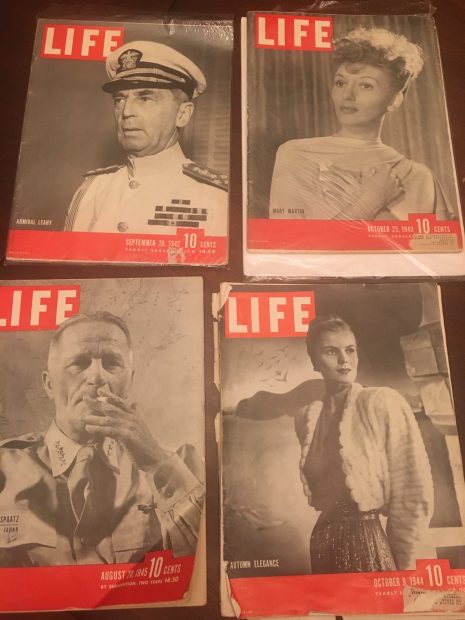
Life Magazine covers 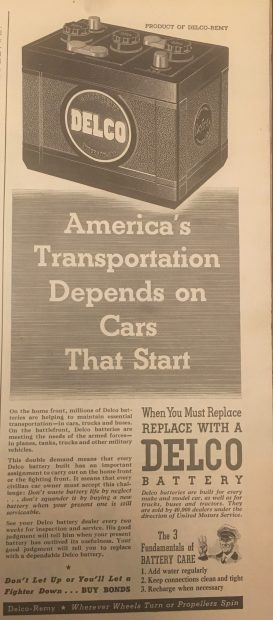
“Don’t waste battery life by neglect … don’t squander it by buying a new battery when your present one is still serviceable.” 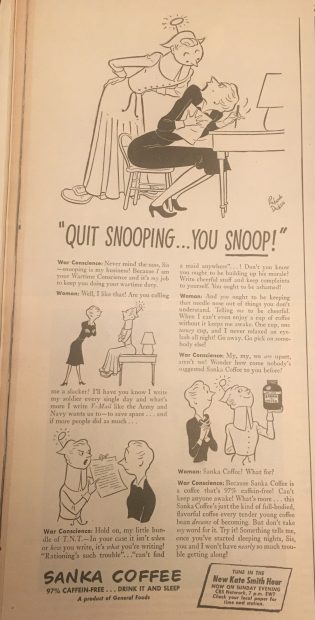
Sanka ad, in which woman grapples with “Wartime Conscience” for complaining of shortages 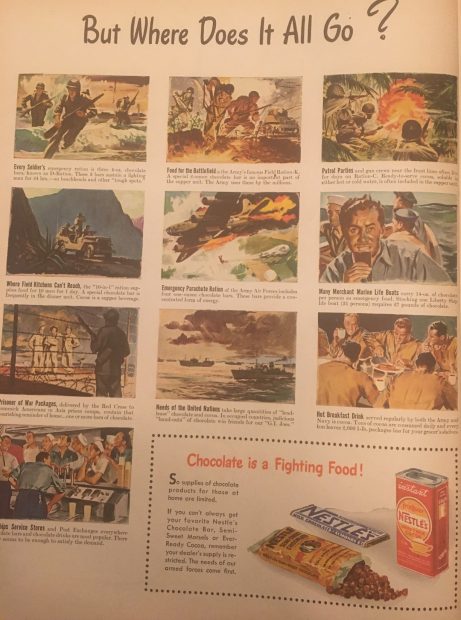
“Chocolate is a Fighting Food! So supplies of chocolate products for those at home are limited. If you can’t always get your favorite Nestle’s Chocolate Bar … The needs of our armed forces come first.” 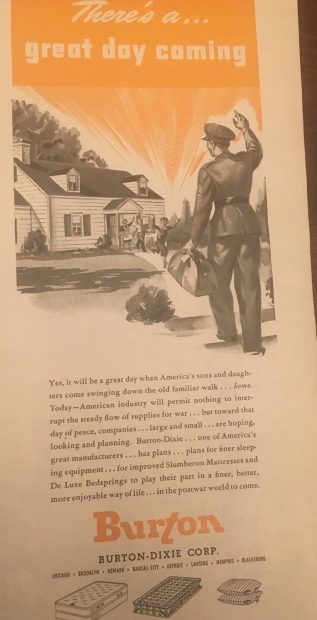
“Today, American industry will permit nothing to interrupt the steady flow of supplies for war … Burton-Dixie has plans … in the post-war world to come.” 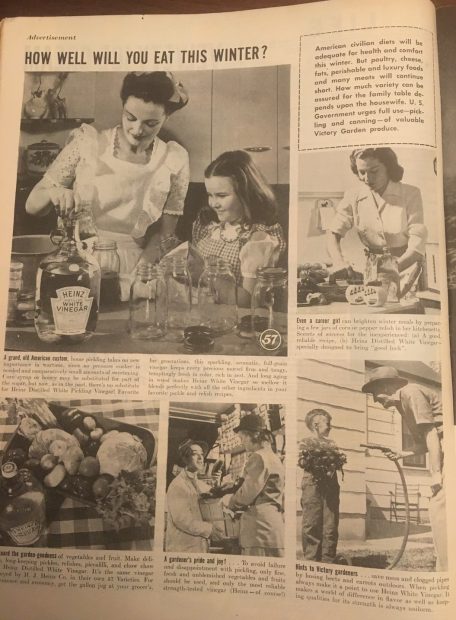
Canning produce from Victory Gardens 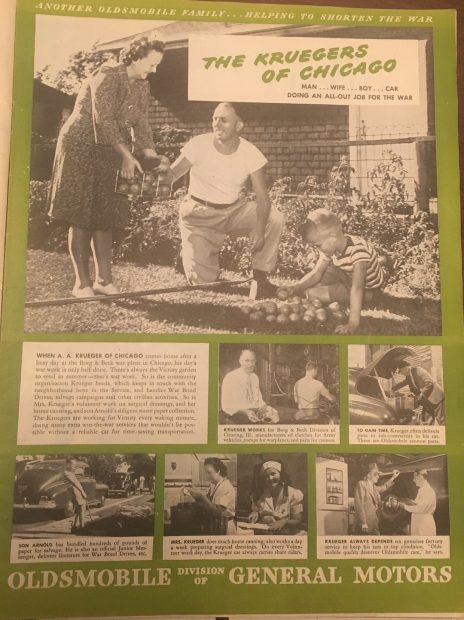
Ad features the wartime duties of an Olds worker family: Victory gardens, home canning, War Bond drives, etc.
There is, to be sure, still plenty of consumer advertising in the magazines: For booze, clothing, foods, tobacco, etc. But even so, “hypocrisy is the tribute vice pays to virtue.” There’s no talk about the supposed unlimited right to do all you want, consume all you want, whenever you want. (Though the advertisers do forecast a coming age of glorious consumption, ginning up a pent-up demand that would snap back post-war.) The constant message is that what you personally do affects the greater good. You’re expected to contribute, by action or sacrifice, to the war effort – just like everyone else is doing.
If we’re going to talk about the Greatest Generation, this sense of common purpose has to be part of it. And that attitude continued to some extent into the post-war era, from the Marshall Plan through the Great Society era. There is something about Make America Great Again – but it is the opposite of Trump’s vanity and recrimination; or the Koch brothers’ oligarchic Darwinism. It’s about looking out for each other; taking personal responsibility; and realizing power in working together.
You don’t have to believe in essentialist mystique about “American character” or anything like that: This was a thing that actually happened, that people did. And that we could do again.
More at Northwestern University library online archive
A video I did over a decade ago about my favorite WWII posters which built our “Homefront Advantage”
https://youtu.be/FIlQJg1kSvk
These were great. Teaching WWII right now and this archive is great for remote learning. Some scavenger hunts are in order!
Does anyone believe we’ve experienced anything even remotely resembling shared sacrifice? We bailed out Wall Street at the drop of a hat…. that was two months ago and we still can’t even get UBI on Pelosi’s wish list. We have people with zero income while billionaires accumulate massive wealth that they don’t need.
This is beyond a disparity of sacrifice. People with wealth and power are profiting off of our collective impoverishment and misery.
We used to call it profiteering — a term that definitely needs to be returned to currency.